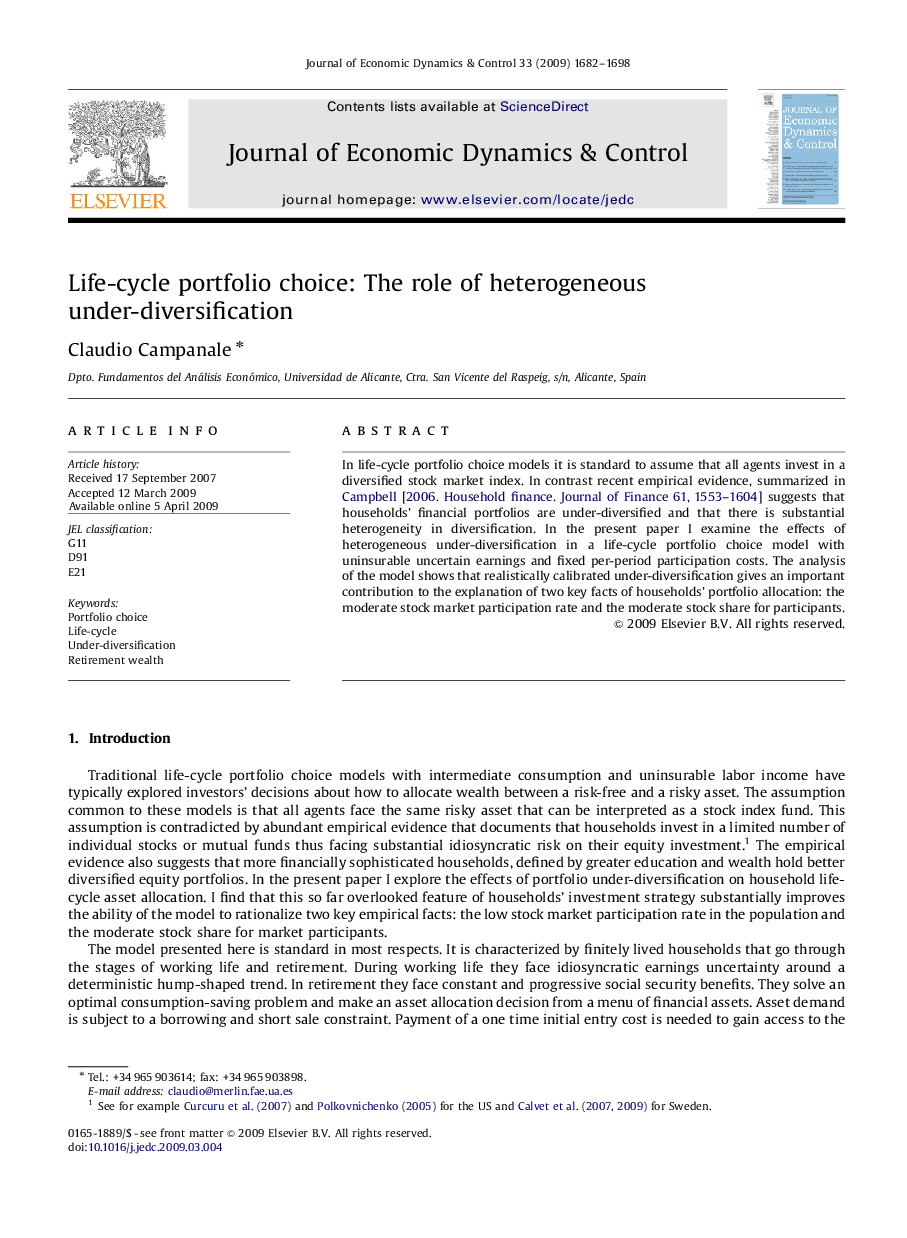| Article ID | Journal | Published Year | Pages | File Type |
|---|---|---|---|---|
| 5099067 | Journal of Economic Dynamics and Control | 2009 | 17 Pages |
Abstract
In life-cycle portfolio choice models it is standard to assume that all agents invest in a diversified stock market index. In contrast recent empirical evidence, summarized in Campbell [2006. Household finance. Journal of Finance 61, 1553-1604] suggests that households' financial portfolios are under-diversified and that there is substantial heterogeneity in diversification. In the present paper I examine the effects of heterogeneous under-diversification in a life-cycle portfolio choice model with uninsurable uncertain earnings and fixed per-period participation costs. The analysis of the model shows that realistically calibrated under-diversification gives an important contribution to the explanation of two key facts of households' portfolio allocation: the moderate stock market participation rate and the moderate stock share for participants.
Keywords
Related Topics
Physical Sciences and Engineering
Mathematics
Control and Optimization
Authors
Claudio Campanale,
